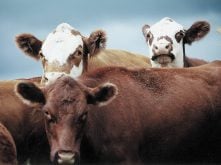This cattle market information is selected from the weekly report from Canfax, a division of the Canadian Cattlemen’s Association. More market information, analysis and statistics are available by becoming a Canfax subscriber by calling 403-275-5110 or at www.canfax.ca.
FED CATTLE RISE
The Canfax weighted steer average was $149.96 per hundredweight, up $2.50, and the heifer average was $148.06, up $1.40.
The fed market regained all that it lost the previous week, and in the process fed steer prices established new second half highs.
Read Also

Pakistan reopens its doors to Canadian canola
Pakistan reopens its doors to Canadian canola after a three-year hiatus.
Fed prices have rallied 13.9 percent from the September lows, which is close but not all the way to the five-year average of 15 percent, so a little upside might be left in the market yet.
Feedlots were willing sellers because of stronger fed prices and basis level. The Alberta to Nebraska cash basis was -$2.30 from -4.52 the previous week.
Sale volumes were light with most of the dressed sales reported at $252 per cwt. delivered.
Packers were looking for cattle to be delivered in the two following weeks. Quick lift times are helping keep weights from getting too far out of hand.
Weekly western Canadian slaughter to Nov. 18 totalled 33,110 head, the smallest non-holiday slaughter since the first week in April. However, slaughter for the year is nine percent larger than last year and 18 percent larger than the five-year average.
Weekly fed cattle exports were strong at about 8,000 head.
Prices for delivery in January are stronger than in December and some feedlots might push sales into the new year.
In the United States, live sales in Colorado and Nebraska ranged from US$120-$120.50, while dressed sales were reported from $188-$190. Prices in the north were steady with the previous week.
COWS LOWER
Large volumes of non-fed cattle overwhelmed demand, pressuring prices lower. D1, D2 cows ranged C$78-$92 to average $84.50, down $2.83. D3 cows ranged $65-$83 to average $75.08.
Rail grade cows were $163-$168.
Slaughter bulls were $93.88, down $2.68.
Western Canadian cow slaughter fell to 8,000 head, but it should be strong for the next two to three weeks. Cow prices have risen into December in eight of the past 10 years.
FEEDERS LOWER
Calf and feeder prices fell for the third week. Heavy steers were under the most pressure.
Steer calves were mostly $2-$4 per cwt. lower, while heifers were down $1-$3.
The fall run is winding down and sales fell by 20,000 head.
Some feedlots are full while others still have ample space.
Ontario buyers are still active in the West.
The market’s premium over last year’s prices is narrowing. Calves were $50-$60 per cwt. higher than a year ago at the end of October, but the premium is now down to $30.
Barley prices are well supported, which has added some caution to the market. Bred cattle volumes are starting to rise.
While calf prices are well above last year, the bred market has not risen due to ample supply and fairly tight feed supplies.
Bred cows were $1,400-$2,300 per head. Bred heifers were $1,7500-$2,500.
US BEEF MIXED
U.S. Choice to Nov. 22 was down $1.23 at US$209.01 and Select was up 81 cents at $188.64. Rib and loin products will become the focus of the market, and prices usually rise.
In Canada, the AAA cutout to Nov. 18 was C$249.28, down 68 cents, and AA was $240.64, down $2.70.














